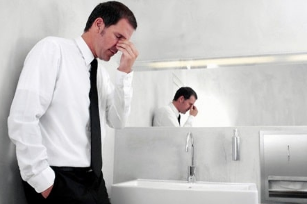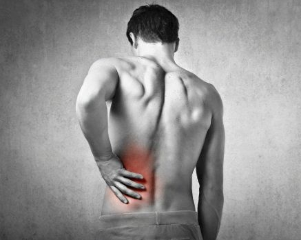What is the characteristic of prostatitis in men: what is it and what are the signs of the characteristics of the primary forms of the disease exist? Knowing this, we will be able to solve the problem, which is not to say out loud. Prostatitis is the most common urological diseases (uretroprostatit), and in particular among the senior group of the male population (around 70 %). Today, the symptoms of prostatitis in men, it is often detected in young people between the ages of 20 and 30 years of age. Without the proper attention and treatment of the disease, which can have a very negative impact on the health of men.

Today, the symptoms of the disease are commonly found in young people between the ages of 20 and 30 years of age.
The main reason that the impact of the disease, is always at the surface. An enlarged prostate can be the result of a habitual way of life, adverse factors, and that the day-to-day changes in the prostate. In the early stage of the pathology, as a rule, low, and minor pain, as the man does not pay attention to the first signs of the future of the a serious problem. The deterioration is like a thunder in a clear sky, when you are sick, so that all of the basic vital problems, becomes important.Related castaneocoronata event bliznyashki between the acute and the chronic forms of the
Here are some of the options of the pathological States and their symptoms:
- Congestive (congestive) prostatitis is frequently a chronic. An enlarged prostate, it is long, at the beginning of the acute period (acute), you can wait for years, he doesn't know anything about that. The reasons for the development of congestive prostatitis:
- The lack of exercise. The stagnation of blood in the pelvis causes the congestive pathological process, and the enhancing of the prostate.
- A traumatic injury.
- And frequent constipation.
- Make a habit of sitting around, throwing one leg over the other.
- Hypothermia. If a man has got a cold in the genitals, creating conditions for the development of an acute inflammation of the joint.
- Caution. Fans of the room, you also have to be careful about prolonged exposure to high temperatures on a pelvic area causes an enlarged prostate gland.
Congestive (congestive) prostatitis can cause deterioration of the sexual life, therefore, it is important to remove all of the root causes and carry out a regular review of the urologist (examination, ultrasound, analyzes).
- Stones in the prostate gland is a rare stone — a frequent companion of men in the elderly. If it's over 40 years of rock is only found in 10% of patients, to 50-60 years of age, the percentage of suffering is increased to 80. Concretions are frequent companions of prostatitis and adenoma (BPH).
- Prostatorrhea — the selection of the urethral fluid, which is formed in the prostate gland. The process is pain-free, as a result of the natureline during defecation or after urination. Prostatorrhea may be the complement of the acute (chronic) prostatitis or due to the anatomical peculiarities of the location of the body.
- Bacterial prostatitis — occurs when it enters the E. coli, which is causing her to increase the pain. Bacterial (chronic, acute) inflammation of the bacteriological diagnosis should be confirmed by laboratory tests. It is often confused with the signs of BPH (BPH — benign tumor) occurs when the number of repeated exacerbations on the background to interfere with the discharge of the urine, and a positive environment for the bacteria to grow.
- BPH — a benign tumor is not cancer, but the natural decay of the tissues of the prostate gland due to the aging process. The increase may be gradual over the years, but according to statistics, a man around 65 to 70 years of age, almost all men have BPH. It looks like you'll be able to find the theme of the pictures on the web. In due time the examination (ultrasound, laboratory) will help to reduce the risk of developing exacerbations and acute retention of urine.
- Purulent prostatitis and its symptoms are some of the unpleasant for men. It is the enlargement of the prostate gland due to the accumulation of pus, and the failure of its free discharge from the body. Purulent process, it is characterized by a high fever, a man was seriously injured in the crotch, palpation is not possible, because of the extreme discomfort. In a timely manner to perform an ultrasound reveals a purulent process, and to provide support.
If a man is a pain in the pelvic area, so don't delay, as the lack of a timely treatment often becomes the cause of serious accidents.
The specifics of the manifestations of the disease
The first sign of inflammation of the prostate gland, a man may feel after each trip to the bathroom. Difficulty in emptying the bladder, and the discomfort of showing that the iron which had already started the inflammatory process, increased in size, and squeeze the heck out of the urine method. Here, the man does the first mistake: to believe that the disease will pass by itself. Don't make it, and the early onset of prostatitis have only the better and the worse. If you want to know more about the disease, the time to begin the treatment by looking for a scene of a video or a photo on the internet.
Asymptomatic prostatitis (asymptomatic) there is one of the problems that can lead to big problems in the future. When there is a deterioration of a person is not aware that in the depths of his body to the Dawn of the uretroprostatit, and the first manifestation of the disease occurs when the pathological process is affecting a large area of the prostate gland.

Often, the inflammatory process that produces pain in the low back such as in sciatica.
The symptoms of inflammation of the prostate gland might be slightly different, depending on the type and severity of the disease. But in the case of men, the first symptoms of prostatitis, which is common to all forms of the disease. So, the obvious signs of inflammation of the prostate gland are the following:
- Frequent urination in the toilet.
- As painful and difficult urination.
- You can increase the core temperature of 39 °C (for sharp).
The man is experiencing daily discomfort that interferes with his full-fledged activities. Thus, the "pair" it with a prostatitis, a doctor's visit, it is better not to pigeonhole. Depending on the specific symptoms will vary in each case. Such a variability of manifestations does not always allow to detect the problem and initiate the proper treatment. Therefore, it is very important to know how does prostatitis at the time, to prevent its development.
Often the disease has the following characteristics (symptoms):
- The pain when urinating.
- The violation of sexual function.
- Discharge from the urethra.
- A burning sensation and pain in the perineum, scrotum, lower part of the abdomen.
- The presence in the urine of floating threads (mucus) or blood.
- Discomfort when urinating.
- Pain in the low back such as sciatica).
- The rigors of the pros and cons, of the temperature (during acute).
- Severe sweating.
- The feeling of a constantly full bladder.
- Irritability, nervousness.
- The fatigue of the.
In chronic prostatitis becomes extremely complicated. The signs may not appear for years, and the patient learns about the disease only at the time of the aggravation.
It is important to point out that the first symptoms of prostatitis in men, which is described above, it does not occur all at the same time. The clinical picture of the disease is highly variable, and depends solely on the individual characteristics of the human being, his or her ways of life, of dependence, of habit. The live expression of the inflammation of the symptoms will occur often in waves, which a lot of people coming back to the introduction of the same patient confusion with regard to the general situation. To identify the exact same symptoms (phase, species) and to determine the proper treatment approach may be the only urologist with the help of special diagnostic methods (sonography), of which you can learn about at the doctor's theme, or to view the video clips on the Internet.
- The strength of the pain.
The pain is usually do not have clearly localized in nature. Irradiiruet pain in the region of the sacrum, scrotum and the perineum, which is confusing to a man and propose to the disease in addition to problems with the prostate gland. In fact, it is a meal in itself, is not a "radiating pain", but rather in the nerves, when it is increased, which may vary from a variety of organs, and produces a minor discomfort. The severity of the pain depends on the way in which the illness began, how the man has got a cold in the genitals. It can vary from dull to pronounced, not allowing the man to sleep.

The intensity of the pain depends on the degree of illness, from mild to sharp, not to allow a person to sleep.
- The problem in urinating.
Very informative the symptom is reflected in the frequent urge to go to the toilet, "small", however, after the discharge of a feeling that the bladder is not sufficiently emptied. This creates an additional psychological discomfort, especially during the time of the day. Thus, symptomatology is the result of a partial compression of the inflammation of the prostate gland of the urethra canal, that cause the urine sample is moved to the free stream flow, and delays. When you do not treat this as a symptom of the disease is progressing, and as a result, they may develop acute retention of urine.
- The low sexual activity.
Therefore, it is considered that the prostatitis lead to impotence, in the genital area. This is partly true, but in the early stages of an infection, that is, only in part, gipotenzia, reflected in the reduction of sexual power. The causes of the disorder can vary, however, prostatitis is one of the first niches in the formulation of sexual problems. Every human being is the process, not just the individual, but it is almost always after the orgasm and the ejaculation of the pain, which a man unconsciously begins to avoid sexual intercourse. If the disease process is asymptomatic in nature, that a man may be a long period of time, to understand the causes of your sexual problems. What do you do in this situation? A complete overview and to detect the disease at an early stage, it will help you in the future, in order to avoid the problem, the pain, and the acute manifestation of the disease.
The difference between an acute and a chronic form
There are two kinds of prostatitis: acute and chronic. Each and every one of them has their own special events, but in the photo there is practically no big difference), according to which a diagnosis is made and treatment is.
The first acute symptoms of the disease:
- The pain in the groin.
- Frequent and painful urination (itching, burning).
- The decline of get an erection.
- In the urine of pathological involvement is in the form of a thread.
- A sudden onset of fever (38-39 °C).
Chronic use may cause a man a lot of work, pain pain, painful urination, sexual disorders.
In addition to this, these signs of prostatitis in men, weakness, nervousness, fatigue, and apathy.
A chronic course intensifies during exacerbation of all the symptoms of the disease, which is a man of many problems, both physically and mentally. The main symptoms of stagnation of the disease are the following:
- Of pain (can be) a pain radiating to the perineum, scrotum, anus. During erection, all of these characteristics are enhanced by the intimacy of it is less fun.
- Urination frequent, painful.
- A sexual dysfunction.
- In chronic bacterial prostatitis, there are specific secretions, viscous, with a yellowish tinge. Both the urination and the defecation.
Complications of prostatitis are common and they occur very difficult. In an abscess of the prostate, and the sepsis treatment is a long-term, and you don't always end well, however, that the dangerous complications, fortunately, are being developed very frequently.
When we ignore symptoms or to self-treatment, she had a chronic process, moved to the nearby organs, which can cause the inflammatory process. It is filled with the development of further complications, leading to infertility. To respond to the first signs of the beginning of a prostatitis should immediately conduct a comprehensive inspection, such as an ultrasound, and blood tests. It will not be allowed to develop the disease, and provide treatment as early as possible.































